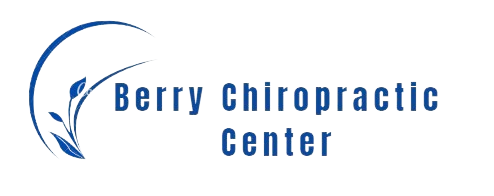In the aftermath of a car accident, victims frequently grapple with a myriad of physical discomforts, many of which are directly related to spinal misalignments and soft tissue injuries. Chiropractic care has emerged as a compelling alternative to conventional treatments, offering a holistic approach to recovery. Through an array of techniques, chiropractic care promotes natural healing, mitigates pain, and enhances mobility, but how exactly does it facilitate this process? As we explore the role of chiropractic care in post-accident recovery, we will uncover the mechanisms that make this approach so effective.
Understanding Chiropractic Care
Although chiropractic care may seem complex, it is actually a fairly straightforward process. Central to chiropractic philosophy is the understanding that the body has an innate ability to heal itself. This philosophy promotes a holistic healing approach, emphasizing the relationship between the body’s structure and its function. The processes involve manual adjustment or manipulation of the spine to correct alignment issues, improve the body’s physical function, and promote natural recovery. The goal is not only to alleviate immediate discomfort but also to enhance long-term health and well-being. Chiropractors are trained to identify and treat a wide range of health issues, ensuring an effective, patient-centered approach to care. Consequently, understanding chiropractic care is the first step towards recovery and long-term health.
The Impact of Car Accidents
Car accidents can result in a wide range of injuries, some of which may not be immediately apparent. It’s important not just to contemplate the physical harm, but also the psychological trauma that can follow such a harrowing experience. Additionally, the long-term physical consequences of these incidents should not be overlooked as they can greatly impact a person’s quality of life.
Understanding Car Accident Injuries
Maneuvering the aftermath of a vehicular collision often involves grappling with a wide range of physical injuries. The nature and extent of these injuries primarily depend upon the car accident types and the injury severity. For instance, high-speed collisions might cause severe trauma like spinal injuries or fractures, whereas minor fender benders could lead to whiplash or soft tissue injuries. Understanding these injuries is essential for proper treatment and recovery. Each injury, whether apparent or latent, requires careful attention and individualized care. Consequently, a thorough assessment by a health professional, such as a chiropractor, is highly recommended following any car accident. In doing so, this enables an appropriate recovery plan, mitigating long-term physical complications.
Psychological Trauma Post-Accident
The psychological aftermath of a car accident often descends like an uninvited guest, bringing with it a plethora of mental health challenges that can be as debilitating as physical injuries. Victims may experience anxiety, depression, and post-traumatic stress disorder, which can hinder their daily activities and overall quality of life.
Chiropractic care, while mainly associated with physical recovery, can also play a vital role in emotional healing. Chiropractors can provide a holistic approach to trauma recovery, helping to relieve not only physical pain but also the mental strain associated with the accident. Regular sessions can help manage stress levels, alleviate anxiety, and promote overall well-being, contributing to a smoother recovery process. The role of chiropractic care in addressing psychological trauma post-accident should not be underestimated.
Long-Term Physical Consequences
While the psychological impact of car accidents is significant, it is equally important to acknowledge the potential for severe long-term physical consequences. Victims often experience chronic pain, a debilitating condition that can drastically decrease quality of life. This may result from injuries sustained during the accident, such as whiplash or spinal misalignments. Additionally, untreated injuries can worsen over time, leading to more serious health issues. As a result, injury prevention and early intervention are essential. Chiropractic care can provide a non-invasive solution, targeting pain at its source and promoting healing, thus reducing the risk of long-term physical repercussions. Understanding and addressing these consequences is a fundamental component of all-encompassing post-accident care.
Chiropractic Techniques for Injury Relief
Steering through recovery after a car accident can be challenging, but chiropractic practices can offer significant relief. Two key techniques include Spinal Manipulation Therapy and Soft Tissue Techniques. These chiropractic methods, among others, can effectively address injuries, restore mobility, and contribute to overall wellbeing.
Spinal Manipulation Therapy
After a car accident, many individuals find themselves grappling with persistent pain and mobility issues. Spinal Manipulation Therapy (SMT) is a chiropractic technique that can provide significant relief. This therapy involves precise spinal adjustments, aimed at restoring the body’s alignment and improving its function. During these procedures, a trained chiropractor applies controlled force to specific joints, alleviating pain and enhancing motion range. SMT works in conjunction with therapeutic exercises designed to strengthen muscles and improve flexibility, promoting a holistic recovery. It’s crucial to recognize that every patient’s needs are unique, and treatments are tailored accordingly. SMT serves as an effective non-invasive method to manage pain, speed recovery, and restore quality of life post-accident.
Soft Tissue Techniques
Beyond spinal manipulation, chiropractic care encompasses an array of soft tissue techniques aimed at injury relief. These methods focus on the muscles, ligaments, and tendons that can sustain damage in a car accident. Soft tissue techniques, such as myofascial release and trigger point therapy, can reduce pain, increase circulation, and enhance range of motion, promoting faster injury recovery.
The precise manipulation of soft tissue alleviates strain on affected areas, facilitating the body’s natural healing process. Though these techniques can prove intense at times, they are generally safe and effective. In the hands of a skilled chiropractor, soft tissue therapies can greatly aid in the recovery from car accident injuries, restoring function and accelerating the return to daily life.
Reducing Pain With Chiropractic Care
While recovering from a car accident can often be a painful process, chiropractic care offers a holistic approach to managing and reducing this discomfort. Techniques such as spinal manipulation, soft tissue therapy, and trigger point therapy can alleviate pain and accelerate injury recovery. These methods not only focus on immediate pain management but also aim to address the root cause of the discomfort, minimizing the risk of recurring pain. Chiropractic care emphasizes the body’s innate healing abilities, working synergistically with physiological systems to restore health. Unlike medications that mask pain, chiropractic interventions target the source, providing sustainable relief. An integrative, chiropractic approach to post-accident care can enhance overall recovery, fostering a return to normalcy and improved quality of life.
Restoring Mobility After Accidents
A significant number of car accident victims experience mobility issues, a problem that chiropractic care can effectively address. Through thorough mobility assessments, chiropractors can identify the areas of concern, thereby setting the stage for a tailored treatment approach. These assessments aid in determining the extent of mobility loss, allowing for the creation of an individualized plan to regain strength and flexibility.
The use of restoration exercises forms an essential part of this plan. These exercises, carefully guided by the chiropractor, focus on promoting joint flexibility, strengthening muscles, and enhancing coordination. Not only do these exercises aid in restoring mobility, but they also help to prevent future injuries. Ultimately, chiropractic care plays an integral role in restoring mobility after accidents, paving the way towards a return to normalcy and improved quality of life.

The Role of Chiropractic in Rehabilitation
Following the restoration of mobility, the next phase in a car accident patient’s recovery journey often involves rehabilitation, where chiropractic care continues to play a fundamental role. The chiropractic philosophy views the body as an integrated system, believing in its inherent ability to heal itself. This perspective is essential in the rehabilitation phase, as it focuses on achieving a balance of body functions to promote ideal health. Chiropractors use non-invasive techniques to correct misalignments, ease pain, and restore normal functioning. Additionally, a key component of chiropractic care is injury prevention. Through personalized plans, chiropractors educate patients on correct posture, ergonomic principles, and exercises that strengthen muscles and prevent future injuries. Consequently, chiropractic care can greatly aid the rehabilitation process after a car accident.
Long-Term Benefits of Chiropractic Treatment
Chiropractic treatment offers numerous long-term benefits, particularly for individuals recovering from car accidents. Beyond immediate relief, it champions preventive care, aiming to fortify the body against future ailments. This approach mitigates the risk of chronic pain, a common aftermath of vehicular accidents, by addressing underlying issues that could escalate over time.
Moreover, chiropractic care promotes holistic wellness. It doesn’t merely target symptoms but considers the overall well-being of the patient. By focusing on the body’s innate healing capabilities, it encourages natural recovery and ideal health. The adjustments made during treatment can improve mobility, enhance bodily functions, and contribute to mental clarity. Consequently, incorporating chiropractic care in recovery plans can provide lasting benefits that extend far beyond the healing of physical injuries.
Finding a Qualified Chiropractor
While the benefits of chiropractic care for car accident recovery are numerous, it is essential to find a qualified chiropractor to guarantee effective treatment. Checking the chiropractor’s credentials is a critical first step. Confirm they have valid licensure, appropriate training, and experience in treating car accident injuries. Patient reviews can also provide valuable insight into the chiropractor’s expertise and bedside manners. Look for a practitioner who consistently receives positive feedback regarding their treatment approach, patient satisfaction, and recovery outcomes. It’s not just about finding a chiropractor, but the right chiropractor. Your recovery and long-term health depend on it. Remember, you deserve a provider who is not only qualified but also empathetic and dedicated to your wellbeing.
Frequently Asked Questions
Does Insurance Cover Chiropractic Treatments After a Car Accident?
Yes, most insurance policies do cover chiropractic treatments as part of accident recovery. Coverage details may vary, so it’s advisable to review your individual policy or consult with your insurance provider for specific information.
How Long Does a Typical Chiropractic Rehabilitation Program Last?
The duration of a typical chiropractic rehabilitation program depends on various factors including injury severity and patient’s overall health. It often involves different phases for initial relief, corrective care, and long-term wellness, each varying in length.
Are There Any Risks or Side Effects Associated With Chiropractic Care?
Chiropractic care, like any medical procedure, carries potential risks including temporary discomfort in treated areas. Side effects might include fatigue or headache. However, most patients respond well to treatment with minimal adverse effects.
Can Chiropractic Care Help With Emotional Trauma Post-Accident?
Yes, chiropractic care can facilitate emotional healing post-accident. By alleviating physical discomfort, it indirectly aids in trauma recovery, creating a conducive environment for mental healing alongside the physical.
How Soon After a Car Accident Should I Seek Chiropractic Care?
Seeking chiropractic care immediately after a car accident guarantees prompt injury assessment and maximizes chiropractic benefits. Early intervention often accelerates recovery, alleviates pain, and prevents long-term physical complications from injuries sustained in the accident.






